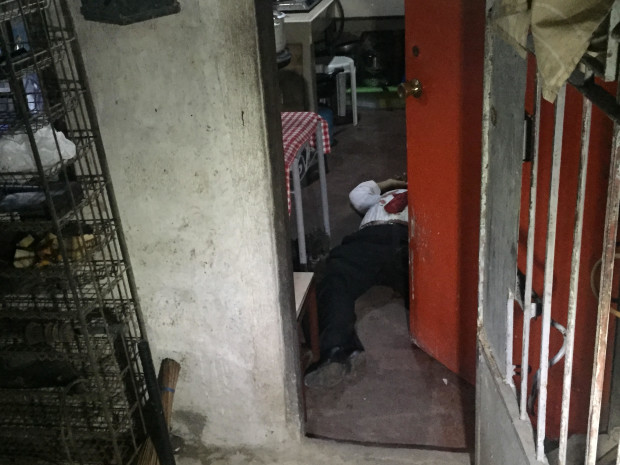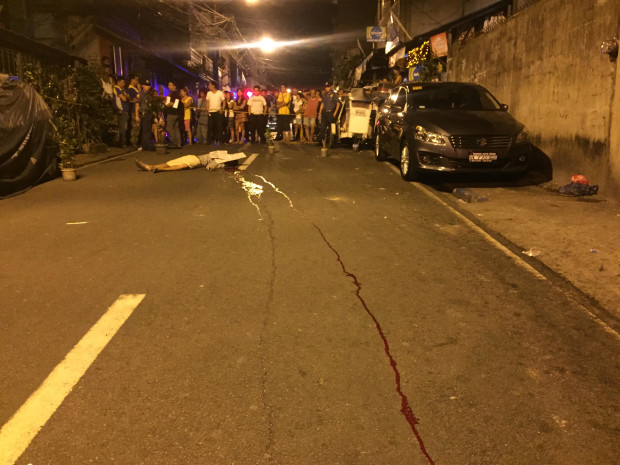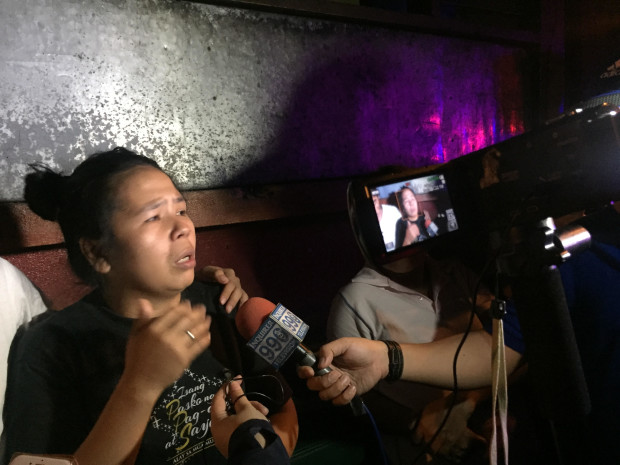Season of fear: No silent nights in war on drugs
The stench of decaying food and human waste jolts us as we search for our first crime scene in the back alleys of Quiapo in Manila. It is 10:25 p.m. on Dec. 21.
From Palanca bridge, we make our way down a narrow street called Muelle de la Quinta along the putrid Estero de San Miguel. The place reeks of urine, but we ignore it and continue to walk, keeping an eye out for blood on the road.
The bodies have already been picked up by the undertaker, sources say, but we want to get video footage of where the supposed gunfight happened.
It’s on the other side of the estero, a man tells us. We go back up the bridge and then down again on the other side, into a dimly lit alley.
We turn our camera lights on and we see the blood immediately—puddles of dark red beside dried yellow leaves.
Article continues after this advertisementTwo men were killed here earlier in the evening after an “encounter” with policemen who had just finished conducting antidrug visits in the neighborhood.
Article continues after this advertisementIt has been more than an hour since we began our graveyard shift and left the busy streets of Makati City, where shoppers and office workers bask under the bright lights and glitter of Christmas decorations, seemingly oblivious to the spate of killings that has hit poor neighborhoods in the metropolis.
It’s the winter solstice and this night is the longest of the year, just a few days before Christmas.
Since President Duterte assumed office on June 30, more than 6,000 people have been killed—more than 2,000 shot dead in police operations and the rest murdered by unknown assailants.
Critics of the drug war believe these assailants either work for the police or are policemen themselves, taking the law into their own hands to help Mr. Duterte deliver on his campaign promise of stamping out illegal drugs in six months, which he has since extended by another six.
A number of those killed are innocent, some as young as 5 years old. Many come from poor communities.
11 p.m. Barangay Addition Hills, Mandaluyong City
Unlike the avenues of Makati, the streets in the inner city are quiet and devoid of Christmas cheer.
Aboard our vehicle, we wait for new reports of shootings, hoping to arrive before crime scene investigators process the spot and the undertaker takes the body away.
Jong Manlapaz, veteran reporter of Radyo Inquirer, receives word that there are two bodies in Mandaluyong City.
Tope, his driver and cameraman, revs the engine and speeds through the late-night traffic to bring us to Block 34, Barangay Addition Hills.
We are the first reporters on the scene. The neighborhood is awake. People stand outside their houses, observing the police.
Bobot Sarvida was killed inside his house by unidentified gunmen. His body is wedged between the jamb and the door, which opens out to an alley.

Bobot Sarvida is shot dead by unidentified men inside his house in Block 34, Brgy. Addition Hills, Mandaluyong on December 21.
We cannot see his head, but we see his white, long-sleeve shirt stained with blood.
Neighbors say Sarvida was a Jehovah’s Witness minister and had just come home from service.
A small, black, long-haired dog stands beside Sarvida’s body, barking at us. It stays with its owner even as we leave.
Another man, Jepoy Pinasbo, was killed in the area around the same time by four unknown gunmen, but his body had already been taken to the hospital.
We ask how the two victims are related, but no one can say for sure.
According to a radio report, Sarvida was shot by the same men who killed Pinasbo after the minister witnessed the murder.
Newspaper reports the next day said Pinasbo was on the local drug watch list as a courier for Sarvida.
Midnight, Barangay Hagdan Bato Libis, Mandaluyong City
With no time to lose, we head for a neighboring village where another man was shot dead.
Barangay Hagdan Bato Libis is a three-minute ride away and we immediately see a crowd gather around the body lying in the middle of the road, just several steps away from a 7-Eleven store.
Michael Desvarro, a 39-year-old cigarette vendor, was killed on A. Bonifacio Avenue.

Michael Desvarro, a cigarette vendor, is also killed by four men on motorcycles along A. Bonifacio Ave., Brgy. Hagdan Bato Libis, Mandaluyong.
His head is covered by newspaper. From there, my eyes move to the small pool of blood beside him and the stream of red that has flowed down the road past the police line.
Like Sarvida’s body, Desvarro’s has yet to be taken away more than an hour after he was shot dead.
Witnesses say Desvarro was gunned down at 9:45 p.m. by four motorcycle-riding men.
Another report said the gunman was holding a picture when he approached Desvarro, who police claimed had been selling drugs besides cigarettes.
Desvarro’s wife, May Anne, insists that he was not a drug addict and was instead the target of harassment by his stepfather, a Mandaluyong policeman who has gone Awol (absent without leave).
1:30 a.m. Barangay Plainview, Mandaluyong City
There is no rest for the weary and soon we are alerted to another shooting in a place just 10 minutes away from our third crime scene.
Press vehicles choke narrow Santo Rosario Street, where a certain Annabelle de la Cruz was shot dead by a group of assassins.
Witnesses said 10 motorcycle-riding men who wore balaclavas and black jackets came after De la Cruz.
Two of the men fired at her. A stray bullet hit a 15-year-old girl walking along the same alley.
De la Cruz, who earlier surrendered to police in response to the government’s antidrug campaign, died in hospital.
The teenager suffered a gunshot wound in the leg and was treated in hospital.
On the drive back to Addition Hills, fellow reporter Julliane de Jesus points out that multiple killings in a city in one night would have merited the setting up of checkpoints.
But there are no checkpoints tonight, only several bodies and a wounded innocent girl.
There are also no answers to our questions on whether the gunmen in the three shootings in Mandaluyong are from the same group.
2 a.m. Barangay Addition Hills, Mandaluyong City
Back at Block 34, our video reporter Cathy Miranda searches for the house where Pinasbo was killed.
A couple lets her and Tope inside the rented house where the young man had staggered into in his haste to shake off the assassins.
Video footage brought back by Cathy show blood splattered on a colorful children’s mat and a spent bullet casing inside one of the homeowner’s shoes.
The bathroom where Pinasbo was gunned down is spattered with blood. In the middle of the floor is a small candle lit by the owners of the house.
President Duterte, in a recent speech, said fewer people were being killed. “There are only a few left,” he said, referring to drug suspects.
But the killings go on.
Residents fear becoming collateral damage in Mr. Duterte’s war on drugs, and even for those who have surrendered, there seems to be no salvation.
In the inner cities of Metro Manila, there is no Christmas this year.
And for the families and friends of the victims, the longest night of the year has just gotten longer.
